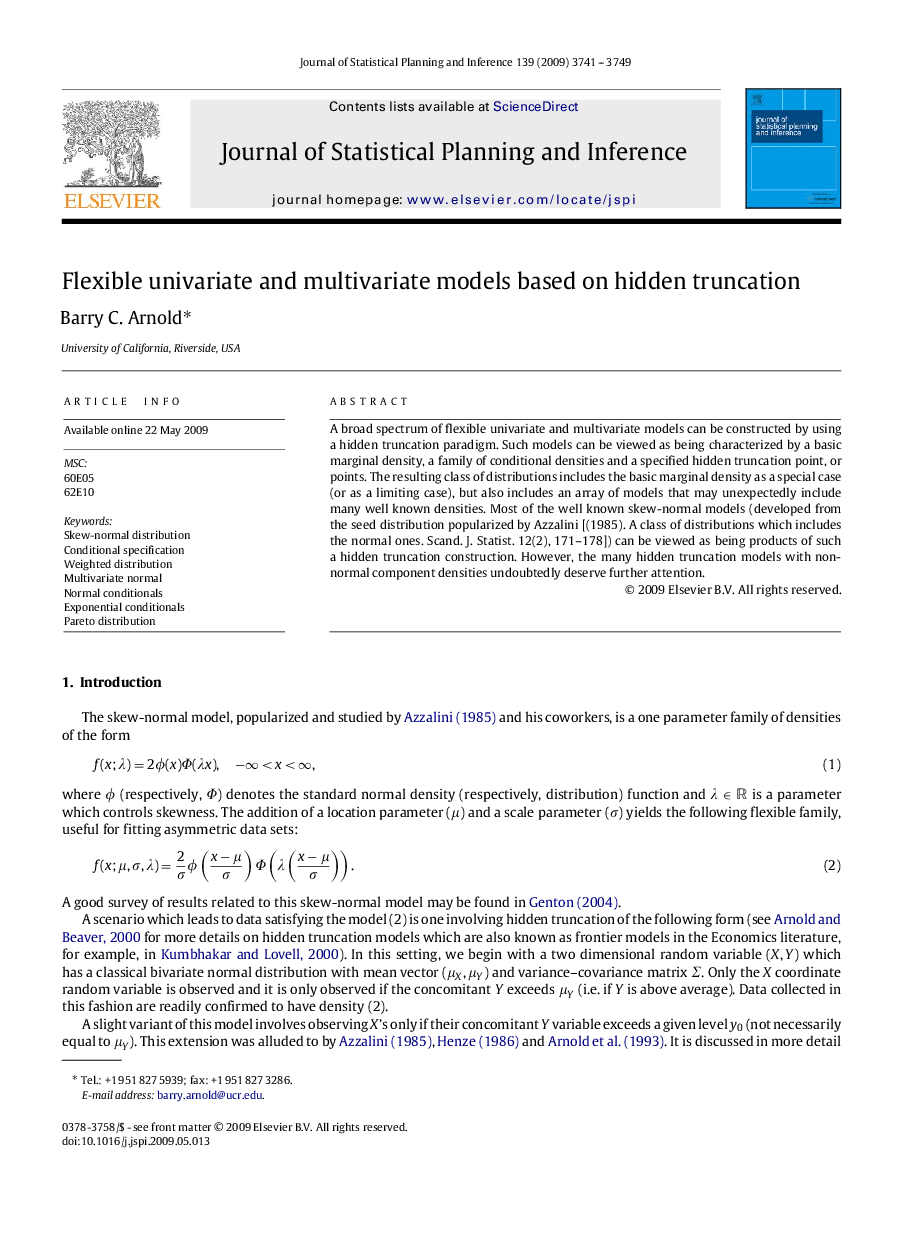| Article ID | Journal | Published Year | Pages | File Type |
|---|---|---|---|---|
| 1147900 | Journal of Statistical Planning and Inference | 2009 | 9 Pages |
A broad spectrum of flexible univariate and multivariate models can be constructed by using a hidden truncation paradigm. Such models can be viewed as being characterized by a basic marginal density, a family of conditional densities and a specified hidden truncation point, or points. The resulting class of distributions includes the basic marginal density as a special case (or as a limiting case), but also includes an array of models that may unexpectedly include many well known densities. Most of the well known skew-normal models (developed from the seed distribution popularized by Azzalini [(1985). A class of distributions which includes the normal ones. Scand. J. Statist. 12(2), 171–178]) can be viewed as being products of such a hidden truncation construction. However, the many hidden truncation models with non-normal component densities undoubtedly deserve further attention.
